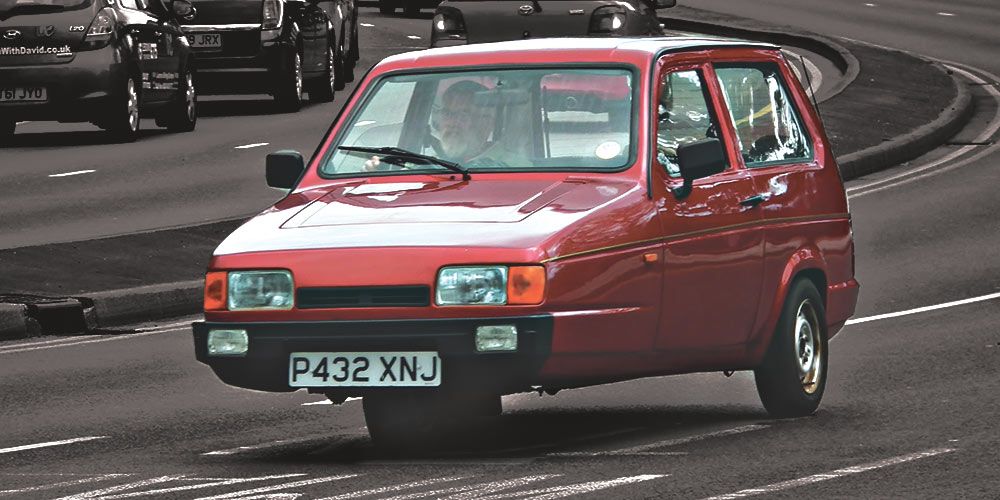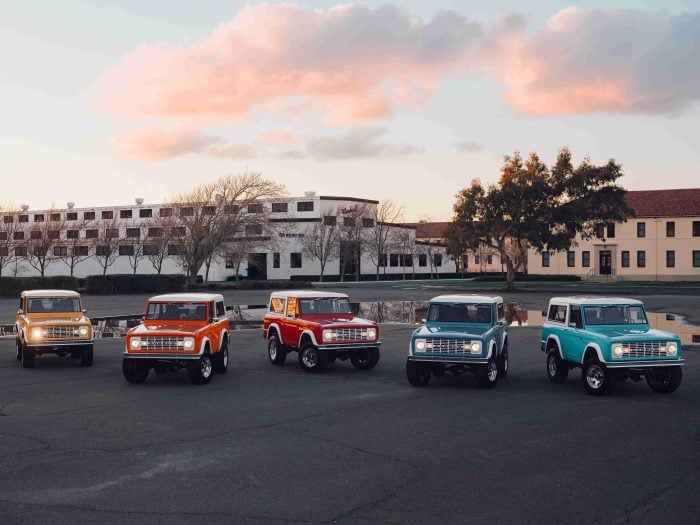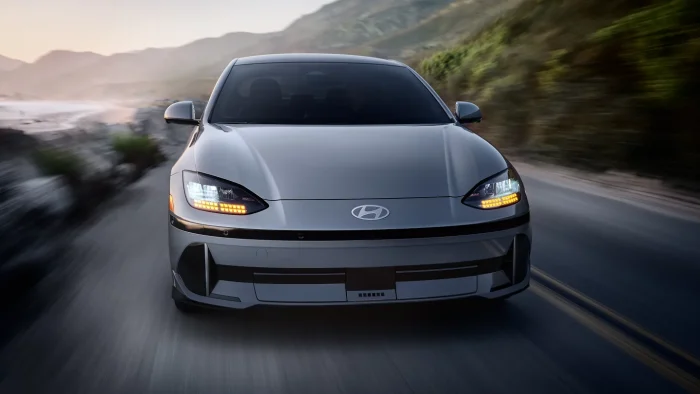There are certain cars that define cool. Each decade has a style, from the iconic coolest cars of the ’80s to the modern appeal of cars from the 2000s. Other cars, to put it gently, are not nearly as sharp. Whether it’s horrible design or a lack of reliability, these are 10 of the worst cars ever made.
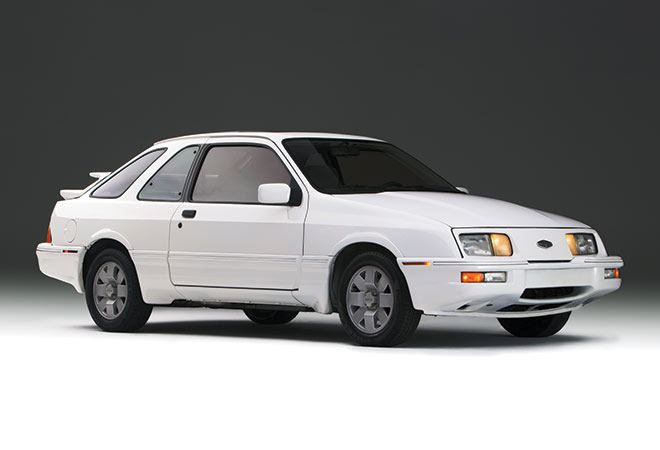
Merkur XR4Ti
First production year: 1985
Sold in the United States for a scant four years, the Merkur was essentially a reworked take on the European version of the Ford Sierra (Ford opted to sell under the Merkur brand name for the XR4Ti European release). The rounded silhouette design might have been common in the ’90s, but in the ’80s it was novel compared to the boxy cars of the day. While the suspension was softer, the car lacked power in a big way. The initial two level wing design was originally viewed as a positive by the automotive press, and the curious XR4Ti actually made the Car and Driver Best List in 1986. But Ford couldn’t leave well enough alone, and they replaced the two level spoiler with a single spoiler that actually increased its coefficient of drag. Shortly thereafter, Car and Driver removed the soon to be discontinued Merkur from its 1986, list citing lack of sales.
Ford Pinto
First production year: 1971
Where most cars are designed to protect the occupants, the Ford Pinto had other ideas. You see, due to a design failure, a rear impact could cause the fuel filler to come loose and puncture the fuel tank, often times ending in the car being engulfed in flames like some high-budget movie stunt. As if that wasn’t bad enough, Ford allegedly determined that the cost of litigation would be less than fixing the problem (by some accounts, more than 25 deaths were attributed to the car’s design). It was the first attempt at the subcompact car for Ford, and it didn’t last all too long. The Pinto was discontinued in 1980, and the road was safer for it.
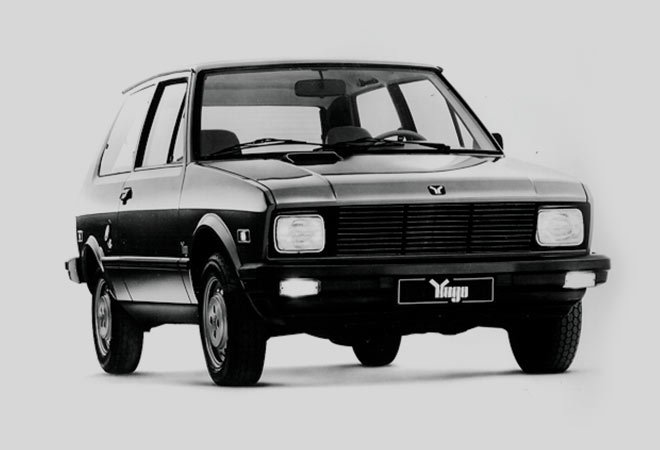
Yugo GV
First production year: 1985
To be honest, there probably weren’t too many people who expected much from the Yugo GV. Making its way to the U.S. via Communist-led Yugoslavia, the GV was designed to be an affordable car for everyone. Thankfully, everyone didn’t buy it, as the engines and electrical systems were prone to failure. And if you did make the unlucky decision to pony up for this Soviet-era version of a VW Golf, you had to pay extra for some carpeting under your feet. Today, Car and Driver has it listed as the “worst car in history.”

Ford Mustang II
First production year: 1973
Mustangs are almost universally understood as cool. But not the Mustang II. Although rarely seen now (thankfully), the second generation Mustang shared nothing of the classic styling of the original models. To be fair to Ford, many American cars made from the mid ’70s to early ’80s sucked. This take on the Mustang was smaller, lighter, and less powerful without the option for a V8. It was a product of the times as people worried about a looming oil crisis, and its gas efficiency (about 20 miles per gallon) helped sales. That said, a lack of power defeats the whole point of owning a Mustang. Universally ignored by Mustang enthusiasts, the Mustang II was embraced by people looking to save a few pennies at the pump, and today is rarely listed among the top Mustangs over the past half century.
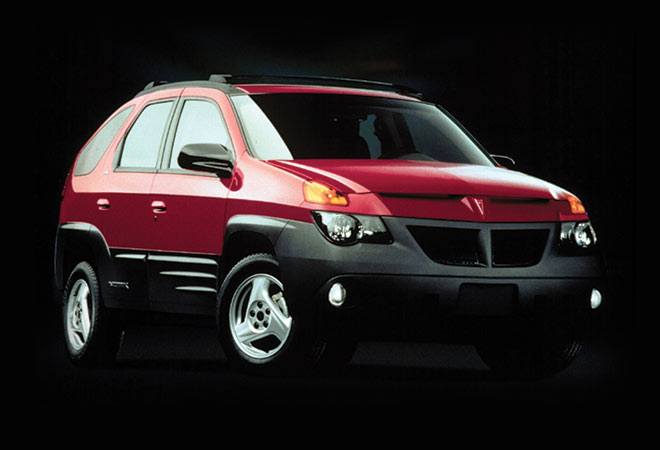
Pontiac Aztek
First production year: 2001
Sure Walter White drove a Pontiac Aztek for a spell on Breaking Bad, but it was more a symbol of mediocrity and desperation than anything else. General Motors hurried a redesign after five months on the market and in total kept the Aztek alive for just five years, which is five years too long by some measures. The goal was for Pontiac to make a mix between an SUV and a sports sedan (long before the modern crossover craze) for its first official SUV release, but even for the time this veered more toward a minivan impersonating an outdoor-ready vehicle.
Davis Divan
First production year: 1947
Made and designed in California, the three-wheeled Davis Divan was made from 1947 to 1949. Plagued with claims of fraud and grand theft, the Davis Motor Company only made 13 of these upside down bathtubs before the bottom fell out. Everyone can be thankful this “futuristic” style didn’t catch on.

Cadillac Cimarron
First production year: 1982
The symbol of American luxury almost met its demise in the ’80s due to this mistake of a car. Cover the grill and you essentially have the look of a Chevy Cavalier. And the performance wasn’t anything to write home about, either, with low power to match the small space. Cadillac stands for luxury, and it simply didn’t work to try and make economy luxurious in this case. It was discontinued by 1988.
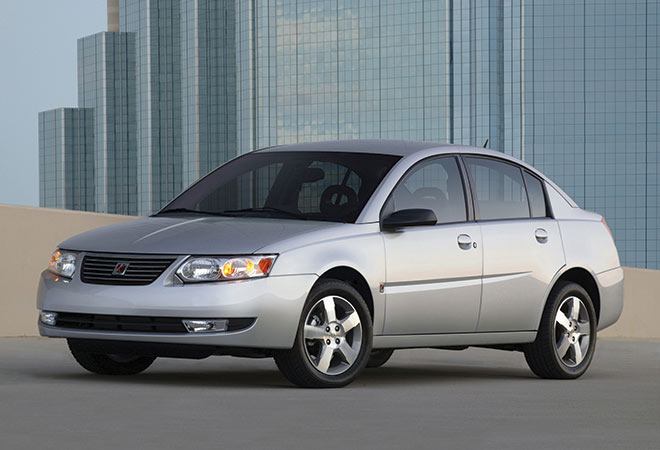
Saturn Ion
First production year: 2003
The Ion is another resident on most lists of worst cars. Despite a solid start as America’s answer to offerings from Honda and Toyota, Saturn was in need of some refreshing. Unfortunately, the Ion wasn’t the answer. It drove loud (and not in the way that a muscle car drives loud) and simply felt as cheaply constructed as it was. With poor build quality and wretched interior styling, the Ion would ultimately be one more nail in the coffin for Saturn. The Ion ended in 2007, while Saturn itself ended in 2010.
Reliant Robin
First production year: 1973
The British Reliant Robin was another of the failed three wheel car experiments. Originally conceived to be classified as a motorcycle with relaxed licensing rules, the Robin (or the plastic pig, as it was called) came in four variations with a top speed of 85 mph. And no reverse. And while the whole flipping over thing was somewhat exaggerated, the Robins did have the unfortunate problem of the steering wheel popping off while moving.
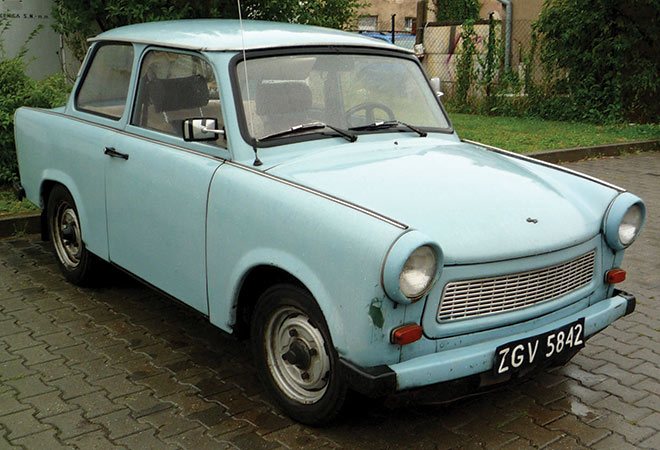
1975 Trabant
First production year: 1975
In Communist East Germany, the Trabant was dubbed the “People’s Car” that was supposed to be an alternative to the VW Beetle. Manufacturing and design, however, were a serious, serious afterthought. At higher speeds, body panels were prone to falling off, but since the Trabant was equipped with an 18 hp motor, high speeds weren’t really an issue anyway. Oil consumption on the 2-stroke motor, well, that was another issue. And safety standards? Well, they just weren’t there. No turn signals, and no brake lights, either. Das katastrophe!

